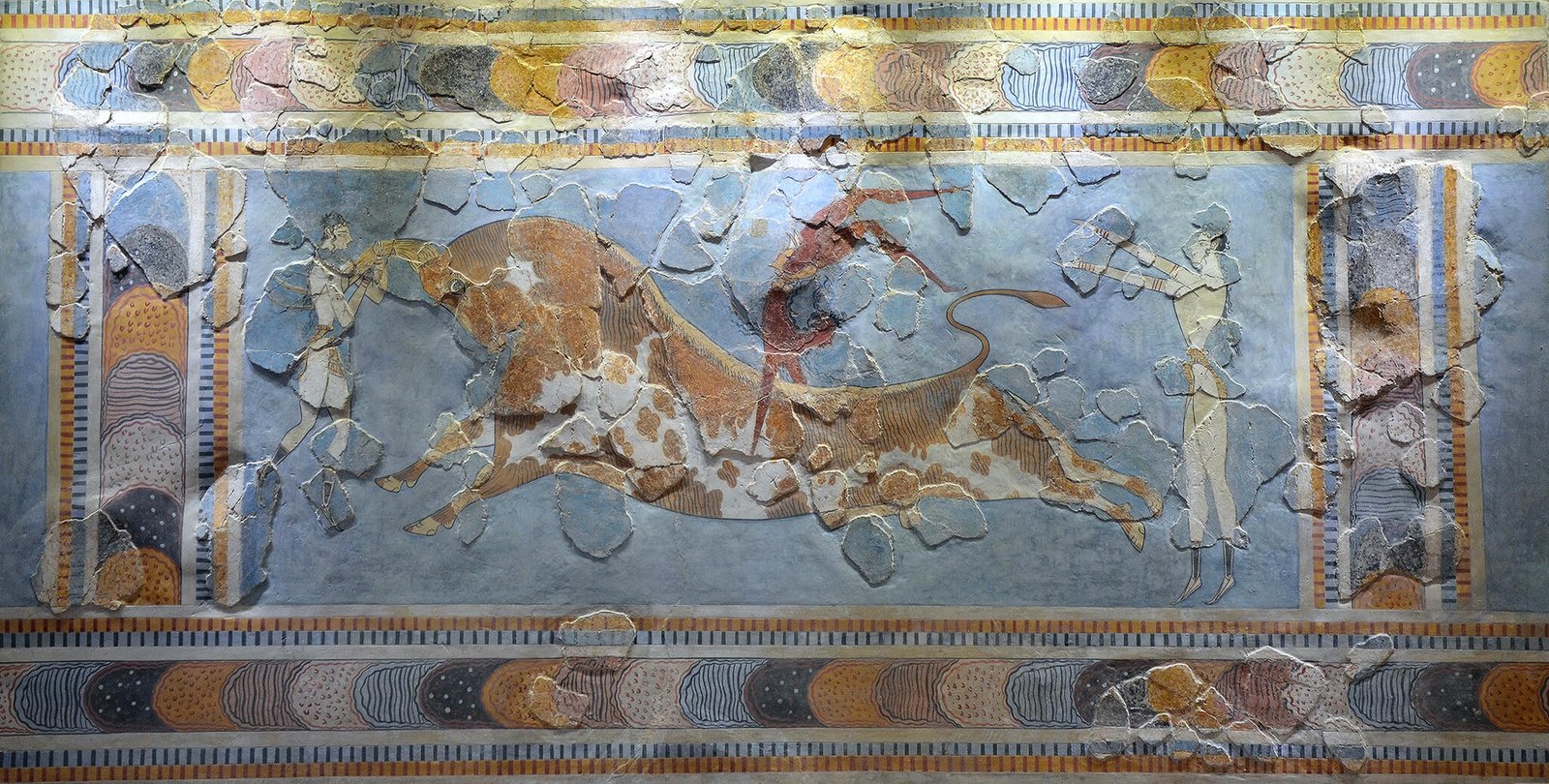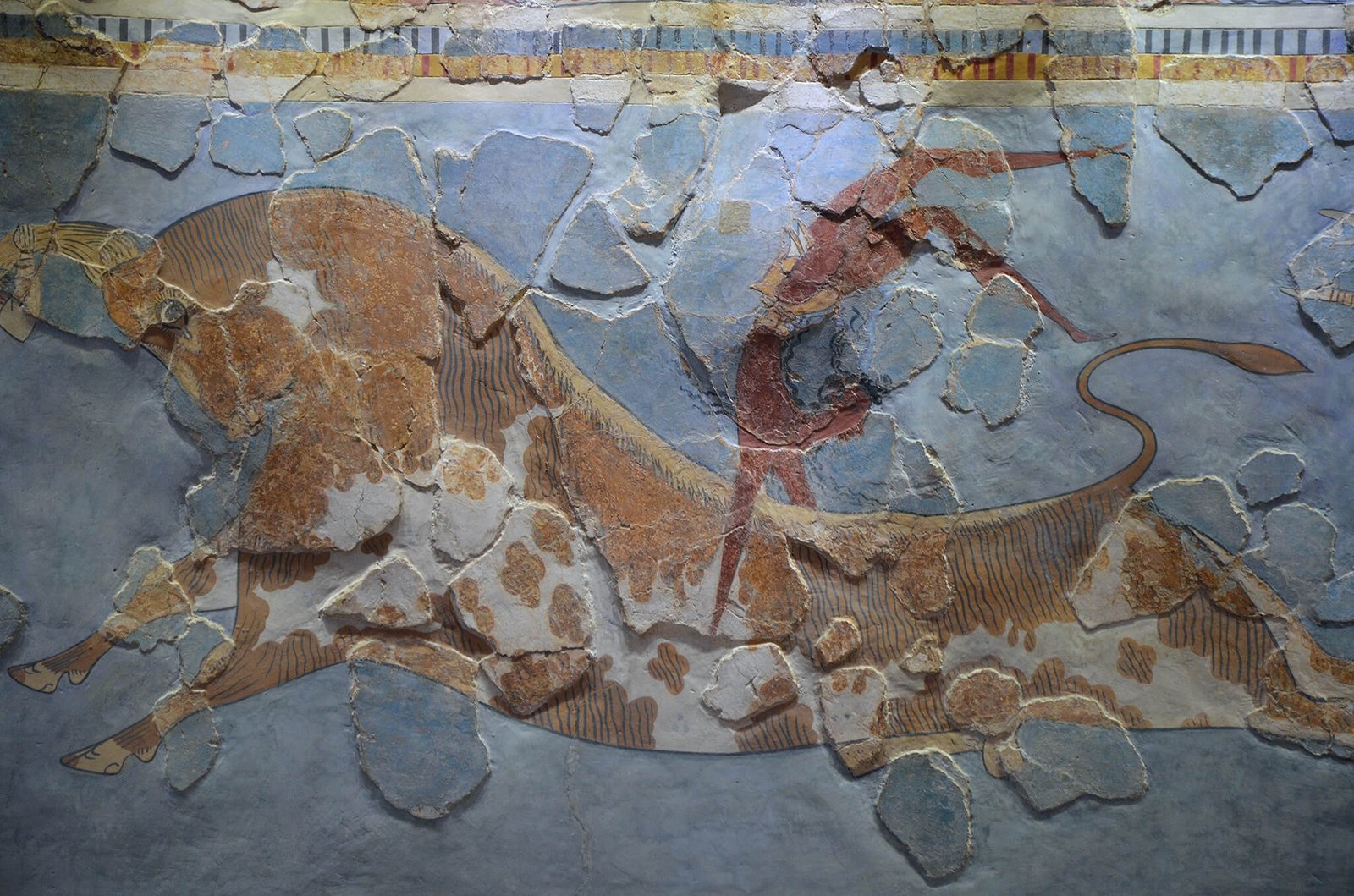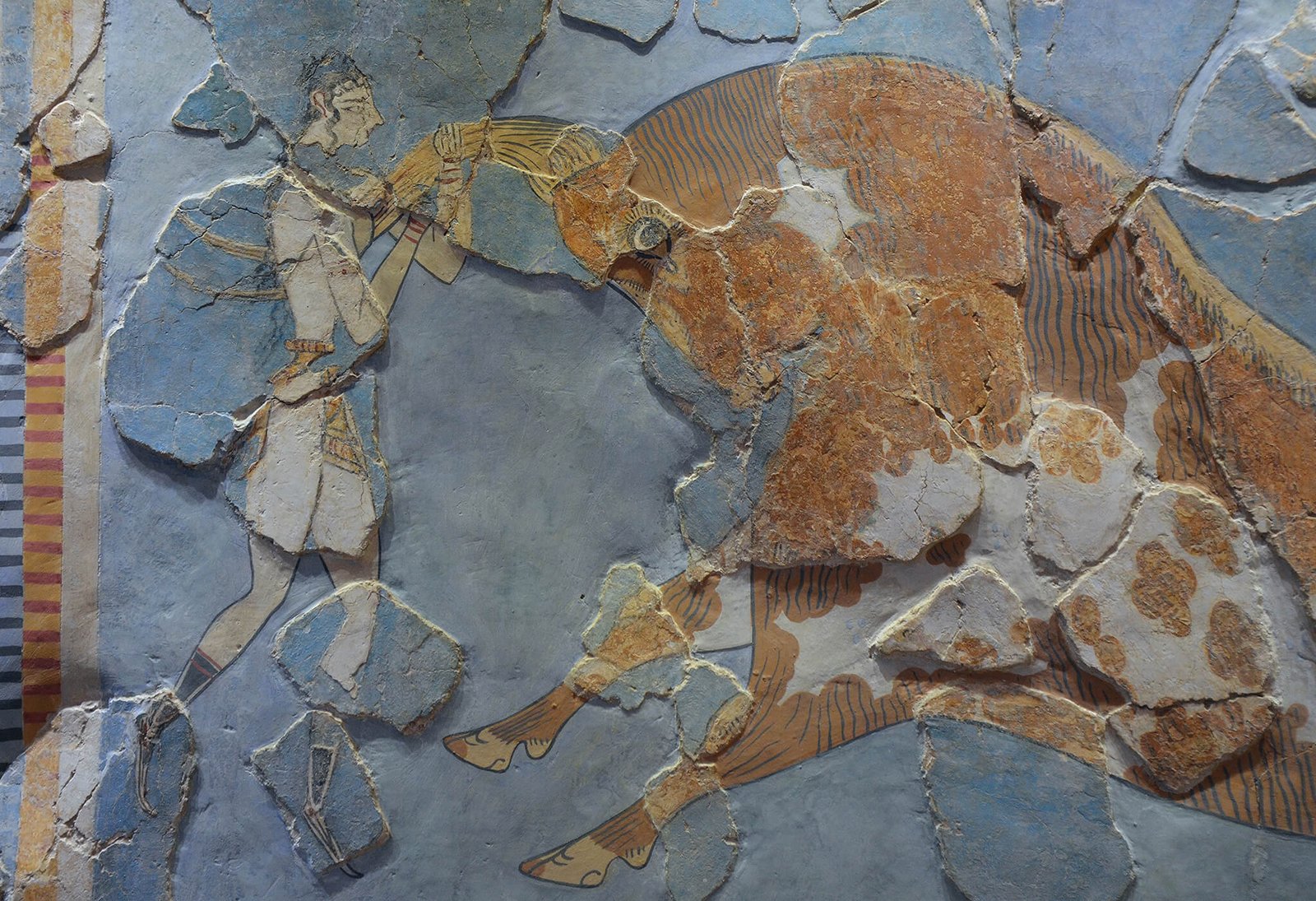
In the ancient city of Knossos, on the Aegean island of Crete, archaeologists found lots of beautiful frescos while excavating. Lots of them depicted scenes of everyday, real and imagined animals, and gorgeous foliage, but one of them depicted something far stranger – a trio of people vaulting over a bull.
Apparently, bulls were a big deal in the ancient world, particularly in Crete, since they appear in ancient arts of all kinds. And in Crete, scenes of bull leaping appear fairly often, but this fresco is by far the most vivid of them. Despite how crazy it sounds, many archaeologists and historians believe that people really did this in the ancient world. (Some scholars completely disagree and believe that it merely represents some sort of mythology or allegory.)

In this fresco, which was part of a series of five, you can see athletes in three stages of the leap. The leftmost figure is literally grabbing the bull by the horns and preparing to jump, although some people have instead seen her as an assistant holding the bull steady. The middle figure is in the middle of his leap, executing what looks like a gymnastics vault. The figure on the right has just landed successfully. It’s interesting to note that the Minoans, like quite a few other ancient cultures, traditionally depicted women with white skin and men with brownish red skin. That means that two of the three bull leapers in this fresco may be female.

Who were the bull leapers and why did they practice this dangerous event? Was it a religious ritual, coming of age ceremony, or court entertainment? There are many theories out there but no general consensus amongst scholars about how bull leaping should be interpreted. And again, some scholars contend that it never actually took place outside of artistic representations.
If you think all of this is crazy, get this – some people actually practice bull leaping today! They’re not on Crete, though. They’re in southern France. Their sport is called Course Landaise, and it involved both evading bulls and leaping over them, sometimes with the leaper’s feet tied together. Fortunately, unlike the bull fights we most commonly think of today, bulls aren’t harmed in Course Landaise. We’re not sure about what happened to them in ancient Crete. We also don’t know what they called this sport in ancient Crete, in case you were wondering.
Read more art fun facts here.
Sources
- German, Senta. “Bull-leaping fresco from the palace of Knossos” in Smarthistory. August 15, 2018.
- McInerney, Jeremy. “Bulls and Bull-leaping in the Minoan World” in Expedition, vol. 53, no. 3, p. 6-13. Penn Museum. Accessed online.

